For those of us who hate early mornings, they can be a bit of a sore trial. As a young bloke with a lack of pocket money, or any of the other stuff my peers enjoyed, pre-dawn moments were spent at the local newsagency earning mad cash. It was brutally cold delivering newspapers in the winter months, especially when the drizzle numbed your ink stained fingers. That’s life when you’re poor and somewhat mercenary.
Most of the time the journalists doing whatever it was that they were doing, got their newpapers to me on time. You’d get off to a good start on those mornings. At other times, whilst waiting for the tardy journalists to get on with their delivery, you’d fill the minutes and very occasionally hours, reading magazines off the shelf. There were no penalties for those dudes being late, my time came cheap.
The paid exercise was good, but all those years of delivering newspapers at ungodly hours of the morning have left some scars. Mornings nowadays are at a quite civilised hour, and usually involves coffee. The drink helps bring the morning into focus. There’s also home made toasted muesli and yoghurt, plus a goodly serving of fresh fruit.
Some fruit is purchased, and some is grown here. It’s not possible to grow the yellow variety Cavendish bananas here. There may be one or two unusual banana varieties which might survive in the greenhouse, maybe. Regardless, I’m not keen to test the plants lest they grow tall enough to smash through the polycarbonate greenhouse roof. Always a risk, so bananas arrive here from the usual land of elsewhere. Earlier in the week a banana was halved, only to discover the dreaded fungus.

It’s very unappealing looking and ended up being fed to the worms. Most food scraps get fed to the chickens, but not this time. The chickens are full of opinions at the best of times, and it’s not out of the realms of possibility for them to crack the sads when presented with a fungus riddled banana.
Unless you can bring in a mountain of diverse minerals with which to continually enrich soils, it’s probably not the smartest thing to do to plant the same plants year after year in the same soils. It’s a hard lesson to learn, but I’m guessing that if the fungi is anything to go by, the banana growers might be discovering this.
Fortunately, most fruit trees we grow have an expected lifespan much longer than say, the four years cycle of an average banana plant. All the same, the fruit trees have to be fed regularly. Earlier today about five weeks of collected used coffee grounds were spread around the orchards and vegetable beds. A café in Melbourne supplies the grounds, which would otherwise end up in landfill. After a decade or longer, that’s a lot of coffee.

Still, you wont find any coffee grounds just laying around waiting to be turned into a wombats breakfast drink of choice. No way! What gets fed to the fruit trees is a mixture of coffee grounds, blood and bone meal, gypsum and Calcium Carbonate. At first it’s a heady stink, and would make a particularly unappealing coffee, but the plants seem to like it well enough.
After almost eighteen years here, it became pretty obvious early on that you can’t just plant a fruit tree and treat it as a set and forget proposition. That won’t work. The first couple of years we fed them mulch because that was the prevailing wisdom at the time. Mulch is really a sort of collection of composted green waste made with it’s origins in city bins. The mulch broke down into a nice black loam, but the trees barely grew. Mulch is minerally unbalanced.
After a few years of that failed experiment, we began feeding the trees with compost, which is a much finer material also produced from city green waste. The fruit trees grew a bit faster, but not massively so. Still minerally unbalanced.
In order to get the fruit trees to begin growing and fruiting, we had to science the poop out of the problem! And nothing beats the coffee ground mixture for getting the trees to grow fast. However, with all the mineral additives, it’s a much more expensive proposition than using mulch and compost. The take away from the experience is that productivity is generally low, things have to be maintained, and it wont ever be cheap to do so.
Recently, we’ve been heading about an hours drive north of here to have a look at some of the ruins left over from the gold rush era. That era began in about 1850 and ended around 1890, although I don’t doubt that there’d be plenty of gold left in that area. It’s probably not an economic proposition to recover. Back in the day though, the miners found an awful lot of gold in that part of the world. And they were pretty clever with how they extracted the stuff from the soil and rocks. One of the ruins was a huge water wheel which powered a quartz smashing battery.
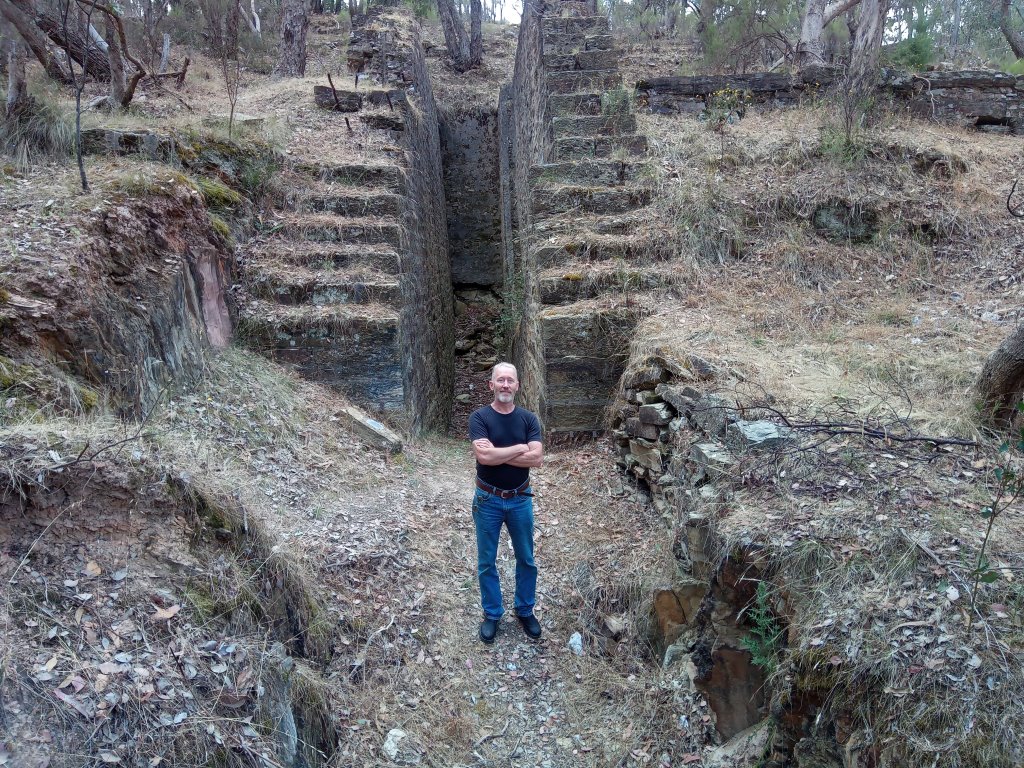
The quartz smashing machine would have sat on the flat terrace to the right and near to the top of the above photo. There’s not much left of any machinery there either, just the rocks. And given the machinery was powered by a huge water wheel it’s notably dry there nowadays. Long ago there must have been a lot of water in the area, because across the road you can see that a high pressure water cannon was used to blast the rocks. Handy for those folks who are reluctant to dig. It’s an epic mess nowadays, and again all quite dry.
None of it was maintained though, and that’s because once it became no longer economic to recover the gold, the machinery was dismantled and presumably sold off. And then all you’re left with is the mess and some ruins. 100% picturesque, 0% economically useful.
Not far from there is an old stone miners cottage dating back to 1867. That’s also a picturesque ruin.

The cottage was quite hard to find. At near on 160 years old, it was in surprisingly good condition. At some stage the occupant had planted a pear tree, which is now quite large (and in need of a good feed and drink). There were also a couple of quince trees which had survived and the garden was surrounded by a quaint stone wall. It was so dry and there was no economic reason for anyone to live there, which is why the place is now a ruin.
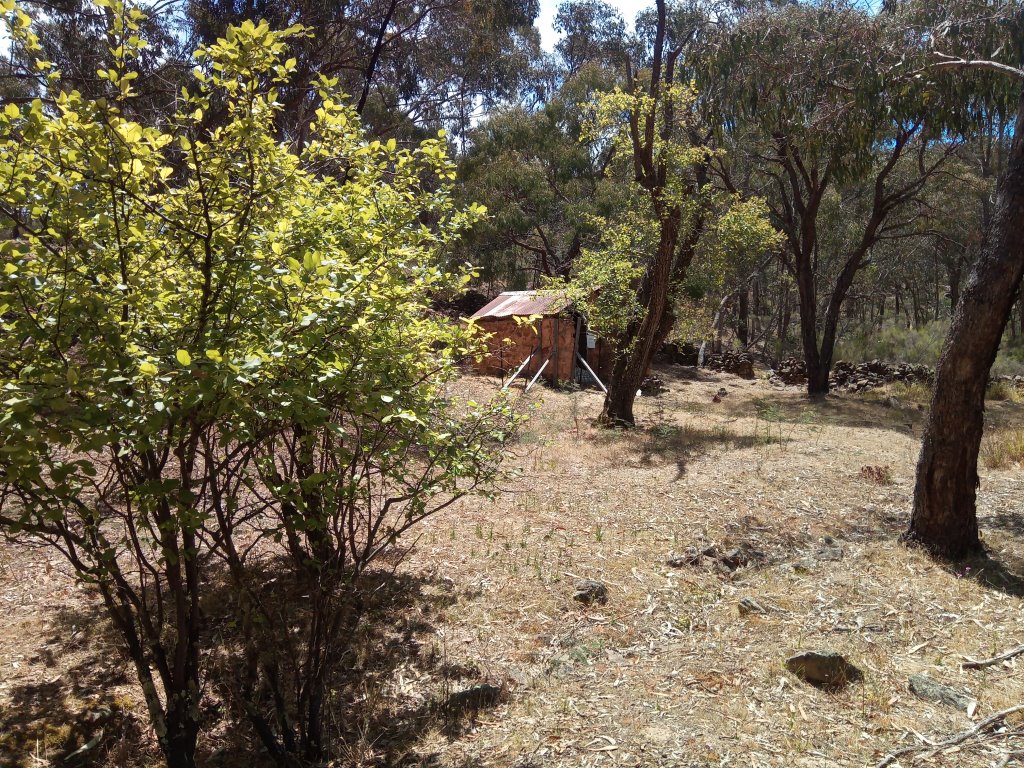
As an older bloke, my time is more expensive than in those newspaper delivering days. Hopefully this reflects the sheer weight of accumulated wisdom. I’d like to think so anyway, yeah. So, getting up early, let alone to deliver newspapers is just not going to happen. Regardless, the news of the day is mostly digital and so doesn’t need physical delivering. Sometimes those bits and bytes of news reports can recount interesting facts. And if you blink, you might miss them. The oil cartel suppliers are threatening to reduce supply in a bit over a week. It’ll be a problem, because from then onwards there’ll be less energy to go around. Makes me wonder what won’t get maintained and how it will look in 160 years time?
Merry Christmas and also a Happy Solstice to everyone!
The area shown in the above photos is about an hours drive north of here. This continent is a harsh place, with impoverished soils and fickle rain. Travel further north inland again, and it gets drier. Up here in the mountains of the Great Dividing Range, the climate can be entirely different.
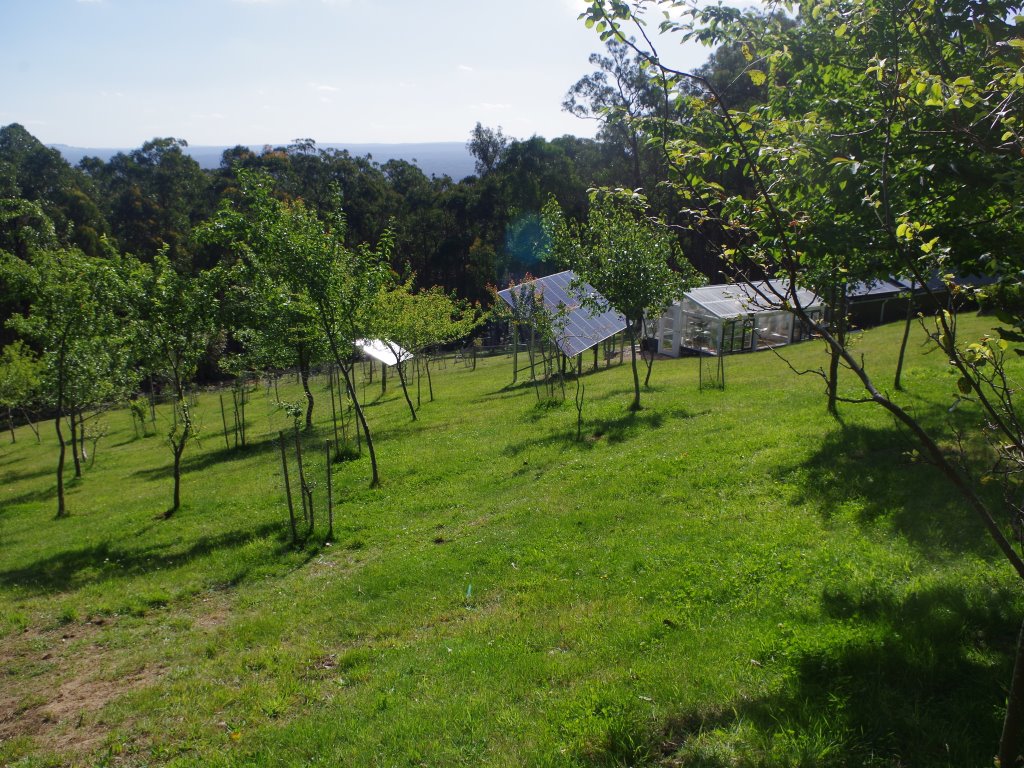
The past few weeks have been spent correcting one of the earliest rock walls we’d made. Experience truly does produce better results. The rock wall in the next image is over a decade old, and it’s not good. A newish ruin perhaps?
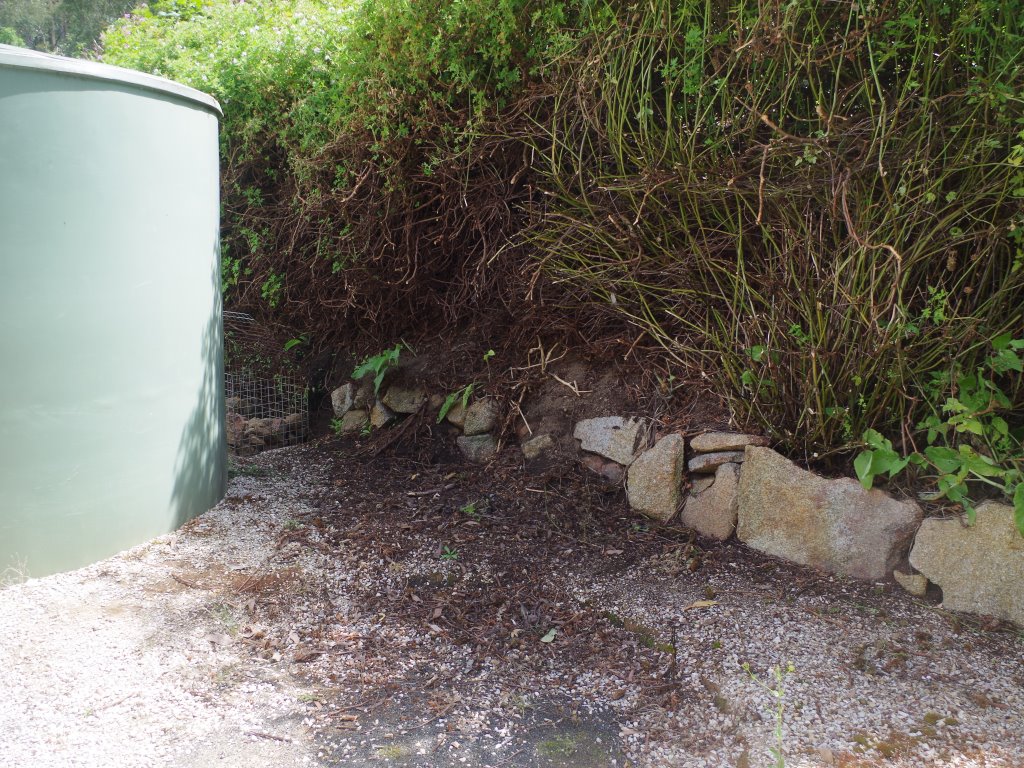
We can do better. The rocks were removed, graded, then repurposed. Most of them were so small that they ended up added to the nearby steel rock gabion cages. The top soil was recovered and relocated to a developing garden bed (with a much better rock wall). And the orange volcanic clay was excavated and used on the new low gradient path project.
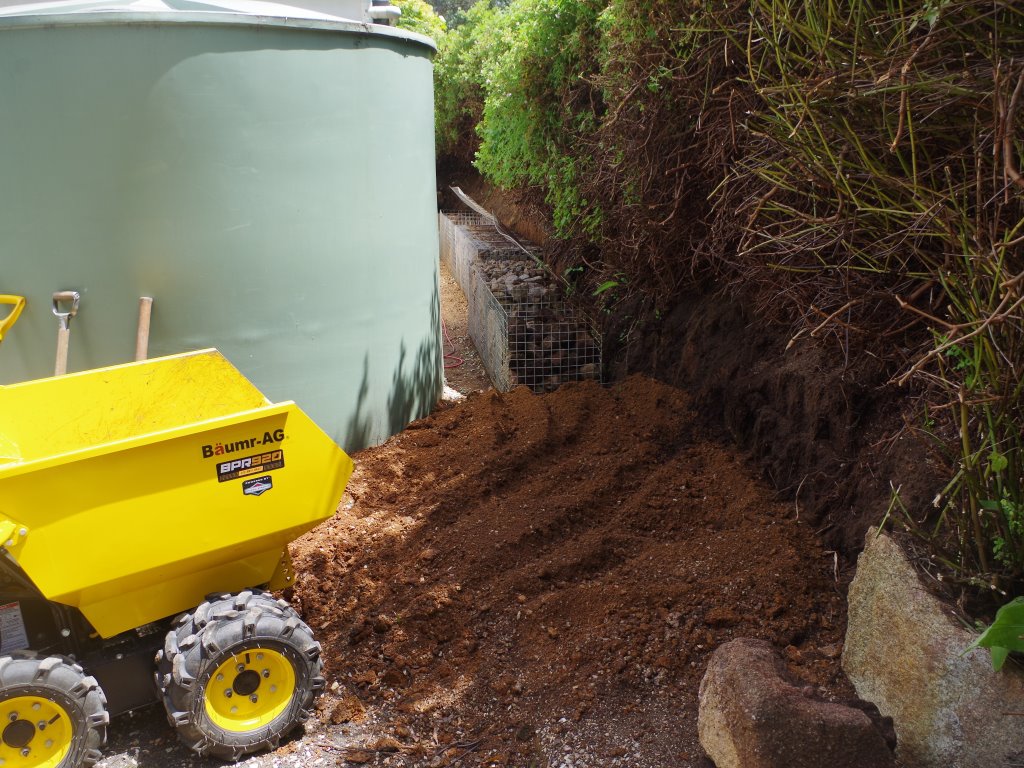
A days work produced a flat excavated site where a steel rock gabion cage will soon be located.

The clay is a really useful material. After a bit of rain, the clay will rebind and over a few weeks will form a solid surface.

As well as exiting into the shady orchard, the low gradient path project also continues on the downhill side of the chicken enclosure. That aspect of the project is consuming a lot of large rocks as well as goodly volumes of the clay.
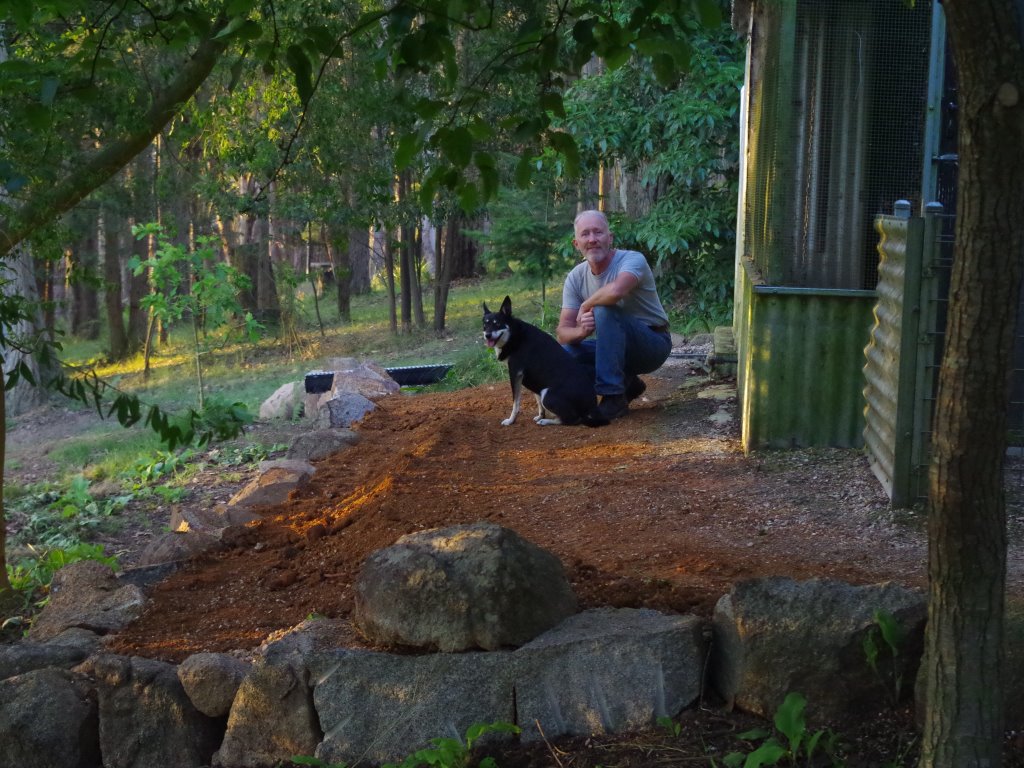
A lot of work took place this week, and somewhere in there, we had the time to make up a batch of raspberry and also another batch of strawberry jam. How good do these look?
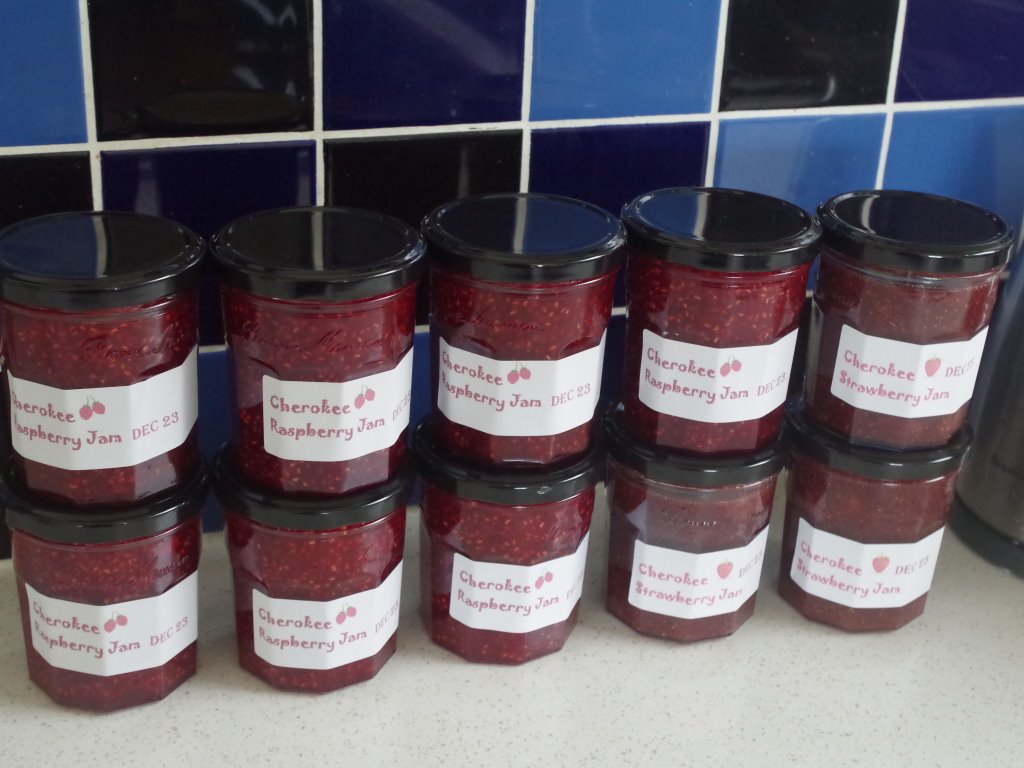
The tiramisu recipe was revisited. This time around we used pure cream with a very high butter fat percentage sourced from Schulz Organic Dairy. The difference was extraordinary as the mascarpone cheese set perfectly. Turns out cream is complicated. Who knew?
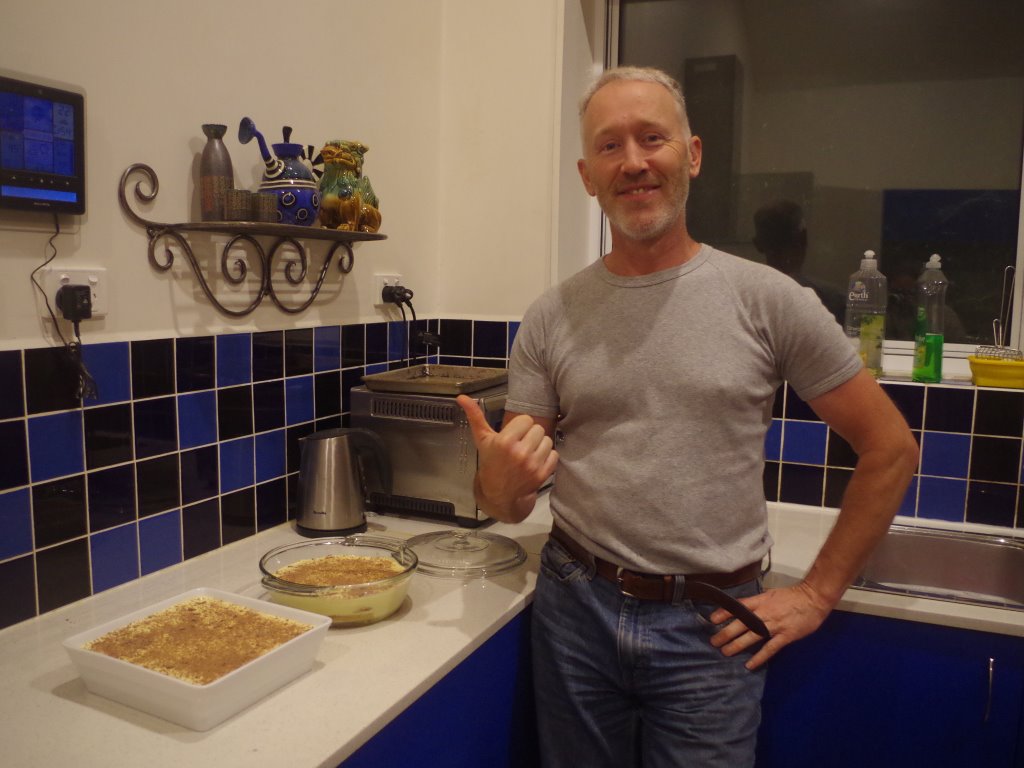
As part of maintaining the fruit trees, not only do they have to be fed and the grass removed from the trunks, sometimes when they over produce, you have to thin the fruit lest the branches break. One of the best performing stone fruit trees here is the Anzac Peach, and sometimes it produces too much fruit. This time around I decided to remove an entire branch. The tree needs some pruning anyway.
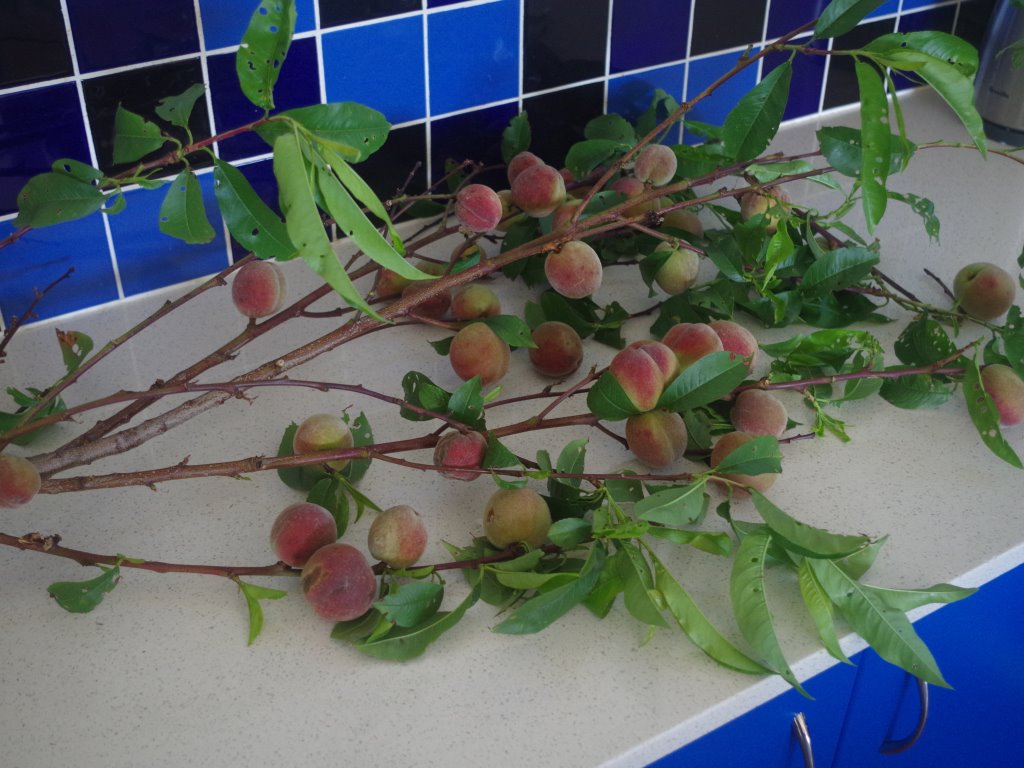
Of late, Ollie the Bull Arab has had his fair share of work clearing off the rather large Sambar deer which lurk in the forest. The deer are not welcome here, mostly because they can cause quite a bit of damage to the fruit trees. The wallabies (a solitary slightly smaller forest dwelling kangaroo) are bad enough on that front, but they’re tolerated. Just.
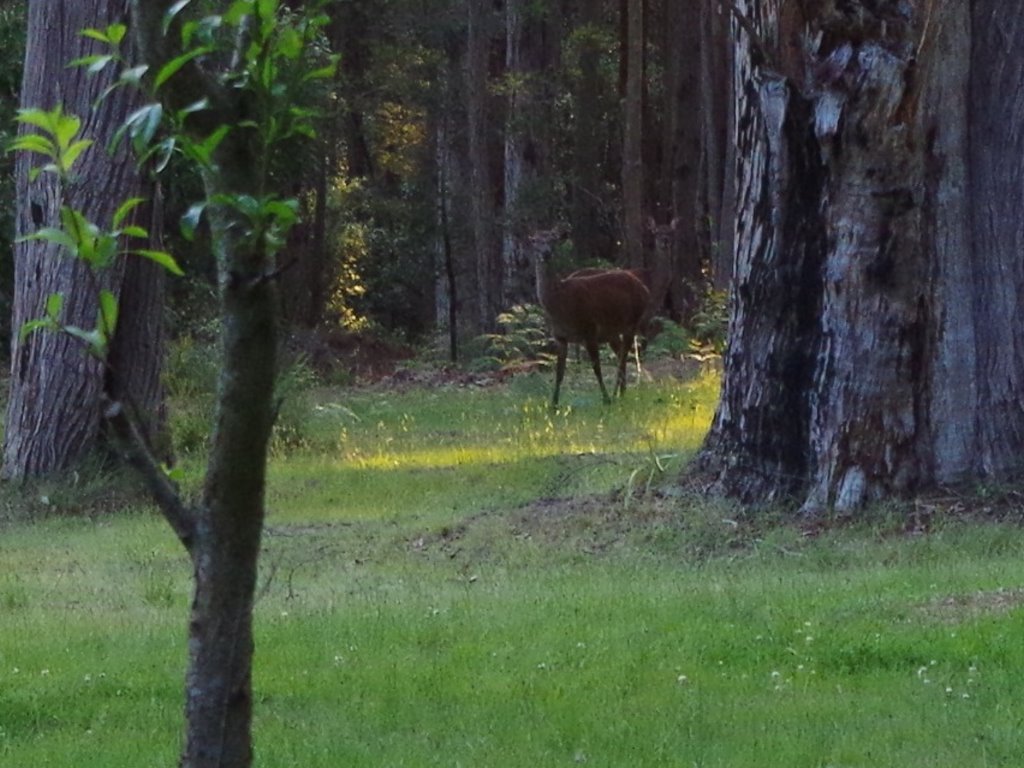
The recent heavy rains have been a real boon for the forest critters living here. At night tree frogs hang off the house hunting spiders and other insects which are attracted to the house lights. Unbelievably, more heavy rain is expected to arrive this evening and continue for the next few days.
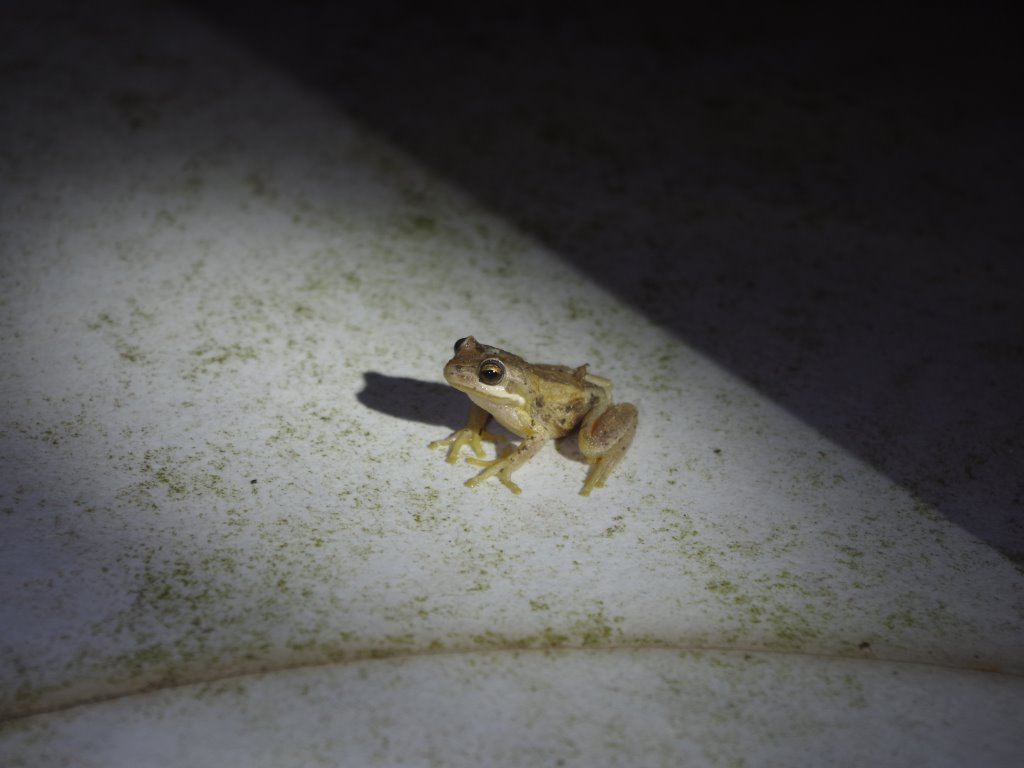
The rains have meant that the gardens have been enjoying a decent drink, which is amazing for this summer-time-of-year. However, every day the greenhouse requires about 60L (15 gallons) of water. Only takes a few minutes to do.
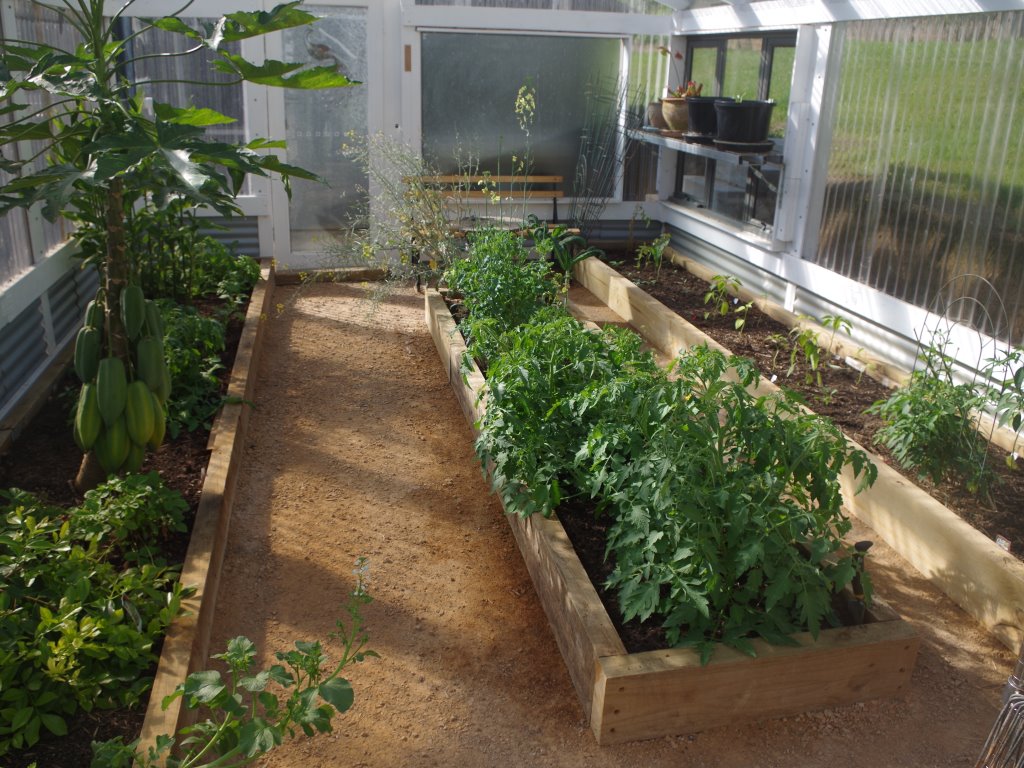
Onto the flowers:
I thought that everyone would enjoy the many flowers in the two terraces containing the rose plants. Ollie is in both photos for the purposes of scale.
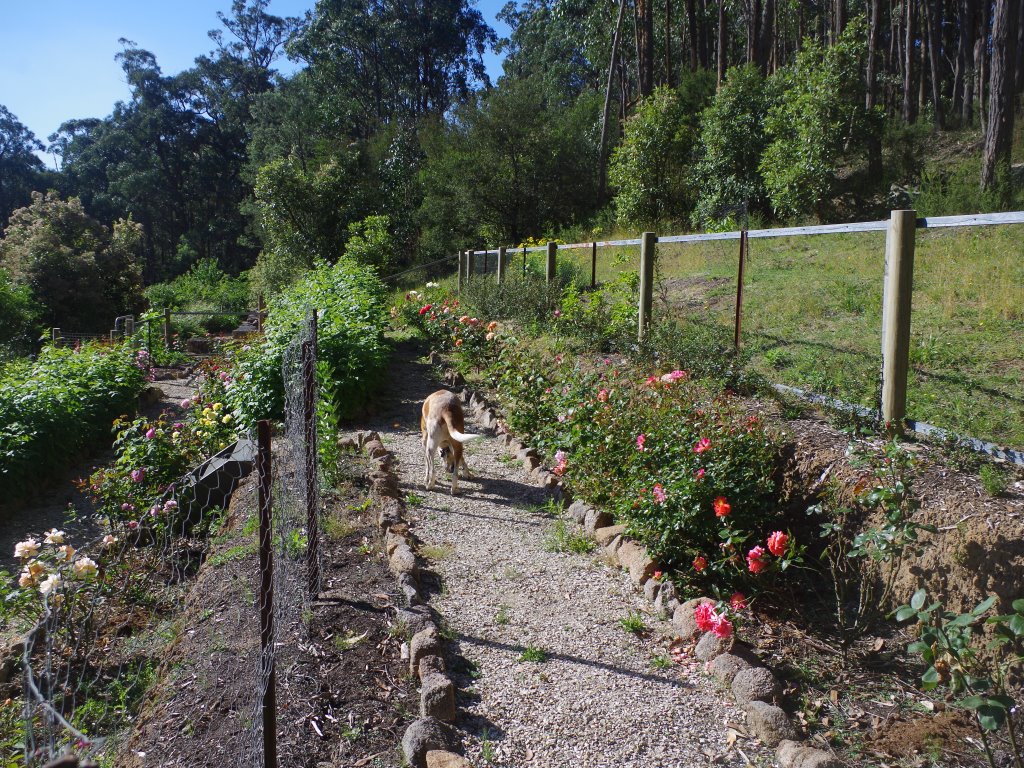

The temperature outside now at about 10am is 15’C (59’F). So far this year there has been 986.8mm (38.9 inches) which is up from last weeks total of 975.8mm (38.4 inches)
